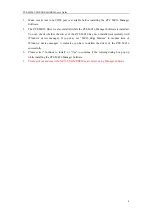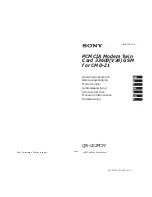
ZTE MZ16 USB EDGE MODEM User’s Guide
20
Exposure to radio frequency energy
Radio wave exposure and Specific Absorption Rate (SAR) information
The Wireless Data card is designed to comply with safely, requirements for exposure to radio
waves. This requirement is based on scientific guidelines that include safety margins
designed to assure the safety of all persons, regardless of age and health.
The radio wave exposure guidelines employ a unit of measurement known as the Specific
Absorption Rate, or SAR. Tests for SAR are conducted using a standardized method with the
phone transmitting at its highest certified power level in all used frequency bands.
While there may be differences between the SAR levels of various ZTE Wireless Data card ,
they are all designed to meet the relevant guidelines for exposure to radio waves.
The SAR limit recommended is 1.6W/kg averaged over one(1) gramme of tissue.
The highest SAR value for this Wireless Data card tested by MORLAB for use at the body is
1.53
0
W/kg(1g)
This device complies with Part 15 of the FCC Rules.
Operation is subject to the following two conditions:
(1) this device may not cause harmful interference, and
(2) this device must accept any interference received, including interference that may cause
undesired operation.
Note: This equipment has been tested and found to comply with the limits for a Class B digital
device, pursuant to part 15 of the FCC Rules. These limits are designed to provide reasonable
protection against harmful interference in a residential installation. This equipment generates, uses
and can radiate radio frequency energy and, if not installed and used in accordance with the
instructions, may cause harmful interference to radio communications. However, there is no
guarantee that interference will not occur in a particular installation.
If this equipment does cause harmful interference to radio or television reception, which can be
determined by turning the equipment off and on, the user is encouraged to try to correct the
interference by one or more of the following measures:
--Reorient or relocate the receiving antenna.
--Increase the separation between the equipment and receiver.
--Connect the equipment into an outlet on a circuit different from that to which the receiver is
connected.
--Consult the dealer or an experienced radio/TV technician for help

































